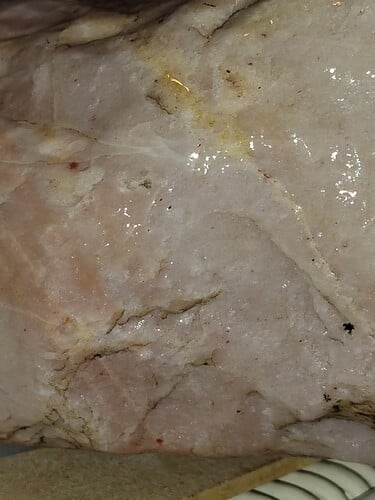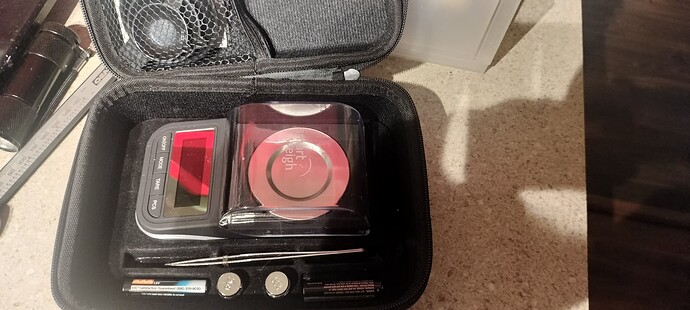I’m newbie here, very excited to join the network. I’ve got a lot of learning to do and would like to start off with some help identifying a gemstone I recently found.
Hi. I’m new too!
That shape is remarkably similar to the “five” sided, lopsized triangle shape of a Polyhedral Agate which I’d never heard of until yesterday.
Where did you find it?
I found it on the river bank.
looks like common quartzite, or vein quartz… Being five sided doesn’t make it a crystal. River banks have a lot of cobbles and pebbles of tough rock that survive being tumbled in a river… quartz stones are harder than steel files, scratching with a file won’t make a scratch…coarse garnet sandpaper has garnet which should make a scratch.
Sorry. I meant what part of the country did you find that in?
did you direct your question to me or to KristinaD?.. I got your question in my inbox… just fyi:
quartzite is so common that it can be found everywhere in the continental USA.
No. The questions was directed to KristinaD.
If you can’t identify it, how can you assume it’s a Gemstone ?
At best, I’d call it common White Quartz with what appears to be some Rose Quartz but it should be tested for Hardness and Specific Gravity to confirm. I have my doubt that it’s Calcite but a simple acid test could help rule that out. Put a drop of Vinegar on it to see if it “Fizzes”.
I believe it was worked in ancient times. That shape and the surface features are a recurring motif, not only in stone, but from at least the late Bronze Age, in metals, bone, terra cotta, etc. Many such examples can be found in ‘ostercon’, which are not very well understood today, but known to have been ritualistic artifacts. I think the British Museum and the Met have a bunch of photos of ostercon on their web sites, if you are interested, check them out, I am sure you will find the same shape (not due to randomness, statistically speaking).
Here are a couple rough examples, the writing is Aramaic on the one w
not likely to be calcite if found in a river bed… calcite too fragile to survive… testing for specific gravity of a large rock would be hard to do with regular measuring equipment… one work around that wouldn’t be very accurate, would be to fill a bowl full of water to the brim and immerse the stone, displacing the water into a larger dish of deep plate and measuing the weight of water displaced and calculating specific gravity from there… testing for hardness using household materials would be easier. By all appearances, I think it’s just common quartz or quartzite.
Looks like “Leaverite”.
North Dakota
WOW very interesting
I’m going to run some of the tests everyone is recommending. Thank you all so much for your input. I will keep updates
where in ND? I’m near the Black Hills in SD… lots of rocks here but finding gemstones is rare.
most of the landscape on the plains is dirt…weathered sedimentary rocks… hard rocks found in riverbeds and stream beds mostly quartz stones… ND like most of SD is covered with cretaceous sedimentary rocks weathering into mud and dirt. Concretions containing golden barite, petrified wood (ND state gemstone), fossils are found in cretaceous sediments… what you found would be eye catching among all of the brown sedimentary rock, but is likely to just be common quartz…just as a note-- they also have found diamond pipes in eastern ND… these are being explored for mineable diamonds.
I agree. Not likely Calcite.
not calcite at all if found in a riverbed… most likely common quartzite. so far as the shape is concerned, the eye has a propensity to find shapes in objects that are irregular. Highly doubtful it’s a Native American artifact.
Wet dry sandpaper used to sand vehicles paint is made from silicone carbide. It will scratch most types of rocks
sorry that you messaged ended up in my SPAM folder. Haven’t been checking spam lately- 200 spams blocked. Yes silicon carbide has a hardness of 9.2-9.4… it’s the hardest substance commonly available besides diamond knife sharpeners… it certainly will scratch anything softer than diamond. can also be used to finish cabs by hand polish with very fine grit, if the stone very hard.
I use silicon carbide to true up and resurface some of my Faceting laps. I put the silicone carbide on a plate of glass with a small amount of water and rub the lap on the glass to true it up and clean up the surface. It works excellently. I’ve been cutting for 15 years and love it. I’m by no means an expert in gem identification or other types of stone id. Except for the common gems and synthetic made gems. I like you just love rocks. Lol lol. I have a microscope, refractometer, and all the other common identification instruments. I will brag on my scale. It measures carats out to .0001 I purchased it several years ago and it wasn’t super expensive and came with calibration weights tweezers and a few cups to set on it. It’s a smart weigh. It has the cover so a breeze doesn’t change the measurements. I blew on it when I got it and it did change the weight. Lol. I love it in case you can’t tell. Lol lol. Happy rocks to you!!!



